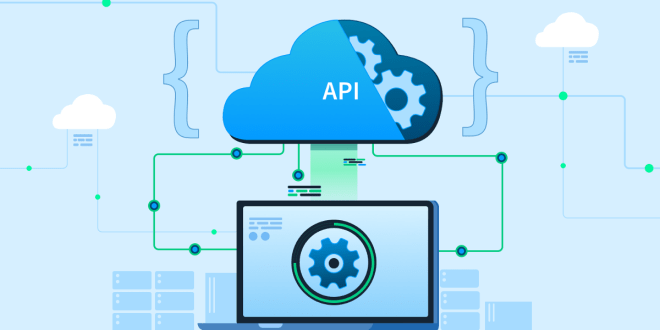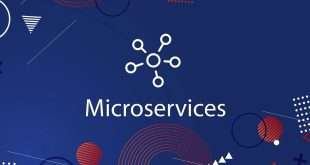Web APIs are the building blocks of modern IoT applications, serving as the intermediary that facilitates the exchange of information between various devices and applications over the internet. They provide a standardized set of rules and protocols that allow developers to access specific features or data from a remote service, ultimately enabling seamless interoperability among heterogeneous devices.
In this article, we uncover the intricacies of web APIs for IoT integration, focusing on how they can solve real-world challenges faced by developers and businesses. From web API tutorials to practical examples, we leave no stone unturned in helping you grasp the full potential of this technology.
Understanding Web APIs and Their Role in IoT
Before delving into the technical aspects, it’s essential to understand the fundamental concept of Web APIs and how they fit into the broader IoT landscape. At its core, a web API acts as a bridge that allows different software applications to communicate with each other using a predefined set of rules. In IoT, these APIs serve as a communication channel for connected devices, enabling them to share data, trigger actions, and perform tasks collaboratively.
Web APIs form the backbone of IoT ecosystems, offering a secure and standardized way for devices to interact with cloud services, databases, and other connected endpoints. With their intuitive design, developers can easily integrate various devices and services into a cohesive network, making IoT systems more efficient and effective.
Key Points:
- Web APIs act as intermediaries for data exchange in IoT.
- They facilitate communication between different software applications.
- APIs play a crucial role in creating cohesive and efficient IoT ecosystems.
The Advantages of Web APIs for IoT Integration
Now that we understand the basics, let’s explore the advantages that Web APIs bring to the table when integrating IoT devices. These advantages not only enhance the functionality of IoT systems but also streamline the development process.
Seamless Interoperability
Web APIs promote seamless interoperability among diverse devices and platforms. Developers can build applications that communicate with a wide array of devices, regardless of their manufacturer or underlying technology. This interoperability fosters flexibility, scalability, and ultimately results in a more robust IoT ecosystem.
Enhanced Security and Access Control
IoT devices often handle sensitive data, making security a top priority. Web APIs, when designed with security best practices, provide a secure channel for data transmission. They also allow developers to implement access control mechanisms, ensuring that only authorized devices and applications can interact with the system.
Rapid Development and Reduced Time-to-Market
With well-documented and standardized APIs, developers can accelerate the development process. Reusable code components and libraries simplify the integration of new devices, reducing the overall time-to-market for IoT solutions.
Scalability and Flexibility
Web APIs enable IoT systems to adapt and grow as the number of connected devices increases. Whether it’s adding new devices or expanding functionality, APIs facilitate seamless scalability, making IoT solutions future-proof.
Remote Device Management
Web APIs empower administrators to remotely manage and control IoT devices. From firmware updates to configuration changes, APIs provide a secure way to perform management tasks without direct physical access to the devices.
Key Points:
- Web APIs promote seamless interoperability and enhance security in IoT.
- They expedite development and ensure scalability and flexibility.
- APIs facilitate remote device management, enhancing control over the IoT ecosystem.
Key Components of Web APIs for IoT Integration
To grasp the intricacies of IoT integration using Web APIs, it’s essential to understand the key components that make up these interfaces. Let’s explore the critical elements that developers need to consider when designing Web APIs for IoT applications.
RESTful Architecture
REST (Representational State Transfer) is a widely used architectural style for designing web APIs. Its simplicity and scalability make it a popular choice for IoT integration. RESTful APIs use HTTP methods like GET, POST, PUT, DELETE, etc., to perform actions on resources, making it easy for developers to interact with IoT devices and services.
Data Formats (JSON/XML)
Web APIs in IoT primarily use JSON (JavaScript Object Notation) and XML (eXtensible Markup Language) as data formats. JSON, being lightweight and easy to parse, has become the de facto standard for data exchange in IoT applications. XML, although less common nowadays, remains relevant in certain legacy systems.
Authentication and Security
Securing communication between IoT devices and APIs is of utmost importance. Developers can implement various authentication methods like OAuth, API keys, or JWT (JSON Web Tokens) to ensure only authorized entities access the API endpoints.
Endpoints and Resources
API endpoints are the URLs through which devices can interact with the API. They represent different resources in the system, allowing devices to perform specific actions or retrieve data.
Error Handling and Status Codes
A well-designed API includes comprehensive error handling mechanisms and standardized HTTP status codes to inform devices about the success or failure of their requests.
Key Points:
- RESTful architecture is widely used in Web APIs for IoT.
- JSON and XML are common data formats for data exchange.
- Security features like authentication and error handling are crucial components.
Implementing Web APIs for IoT Integration: Best Practices
To ensure the success of your IoT integration project, following best practices during the implementation phase is essential. Let’s explore some key strategies that developers should keep in mind when building Web APIs for IoT applications.
Clear and Consistent Documentation
Thorough and well-structured documentation is vital for any web API, especially in IoT integration, where multiple teams may collaborate. Comprehensive documentation makes it easier for developers to understand the API’s capabilities, endpoints, and usage.
Versioning and Backward Compatibility
As IoT systems evolve, it’s crucial to maintain backward compatibility to avoid breaking existing integrations. API versioning helps manage changes in a structured manner, enabling smooth transitions for users.
Rate Limiting and Throttling
To prevent abuse and ensure fair usage, implementing rate limiting and throttling mechanisms is essential. These controls prevent a single device or application from overwhelming the API with excessive requests.
Caching and Performance Optimization
Caching responses can significantly improve the performance of an API. By reducing redundant requests, caching enhances the overall efficiency of the IoT system.
Monitoring and Analytics
Incorporate monitoring and analytics tools to gain insights into the API’s performance and usage patterns. Real-time monitoring enables quick identification and resolution of issues.
Key Points:
- Clear and consistent documentation is crucial for seamless collaboration.
- API versioning and backward compatibility maintain a stable ecosystem.
- Rate limiting, caching, and monitoring optimize performance and usage.
Real-World Web API Use Cases in IoT Integration
Let’s explore some real-world use cases that demonstrate the power of Web APIs in IoT integration, showcasing how this technology addresses various challenges across industries.
Smart Home Automation
Web APIs facilitate the integration of smart home devices such as thermostats, security cameras, and lighting systems. Through APIs, users can control and monitor these devices remotely, creating a seamless and interconnected smart home experience.
Industrial IoT (IIoT)
In the industrial sector, Web APIs are used to connect machines, sensors, and equipment to centralized management systems. This integration enables real-time monitoring, predictive maintenance, and data-driven decision-making, leading to increased operational efficiency.
Healthcare IoT
IoT-enabled medical devices, such as wearables and remote monitoring devices, rely on Web APIs to transfer patient data securely to healthcare providers. These APIs ensure accurate and timely data exchange, fostering improved patient care.
Smart Cities
Web APIs play a crucial role in powering smart city initiatives, connecting diverse systems like traffic management, public transportation, waste management, and environmental sensors. Through APIs, city authorities can streamline operations, enhance citizen services, and promote sustainability.
Key Points:
- Smart home automation, industrial IoT, healthcare, and smart cities are prominent use cases.
- Web APIs facilitate seamless integration and data exchange in these applications.
Final Words
Web APIs form the backbone of modern IoT integration, offering a standardized and secure way to connect and communicate among diverse devices and applications. With their ability to promote interoperability, scalability, and enhanced security, Web APIs address real-world challenges faced by developers and businesses. By following best practices and leveraging the power of Web APIs, businesses can unlock the full potential of IoT technology, ushering in a new era of innovation and interconnectedness.
Frequently Asked Questions
Q1: What are Web APIs in IoT, and why are they essential?
Web APIs in IoT are Application Programming Interfaces that enable different devices and software applications to communicate and exchange data over the internet. They are essential because they facilitate seamless interoperability, enhanced security, and remote device management, creating cohesive and efficient IoT ecosystems.
Q2: How do Web APIs ensure data security in IoT applications?
Web APIs ensure data security in IoT applications through various authentication methods like OAuth, API keys, or JSON Web Tokens (JWT). These mechanisms ensure that only authorized devices and applications can access the API endpoints, safeguarding sensitive information.
Q3: Can you explain the role of RESTful architecture in Web APIs for IoT?
RESTful architecture is a widely used design approach for Web APIs in IoT. It utilizes standard HTTP methods like GET, POST, PUT, and DELETE to perform actions on resources. This simplicity and scalability make it a popular choice for developers, enabling easy interaction with IoT devices and services.
Q4: How do Web APIs contribute to the growth of smart cities?
Web APIs play a crucial role in smart cities by connecting diverse systems like traffic management, public transportation, waste management, and environmental sensors. This integration allows city authorities to streamline operations, enhance citizen services, and promote sustainability, leading to the overall development of smart cities.
Q5: What are some real-world examples of Web API use cases in IoT?
Real-world examples of Web API use cases in IoT include smart home automation, industrial IoT (IIoT) for predictive maintenance, healthcare IoT for remote patient monitoring, and smart cities for efficient urban management.
 webfily
webfily



